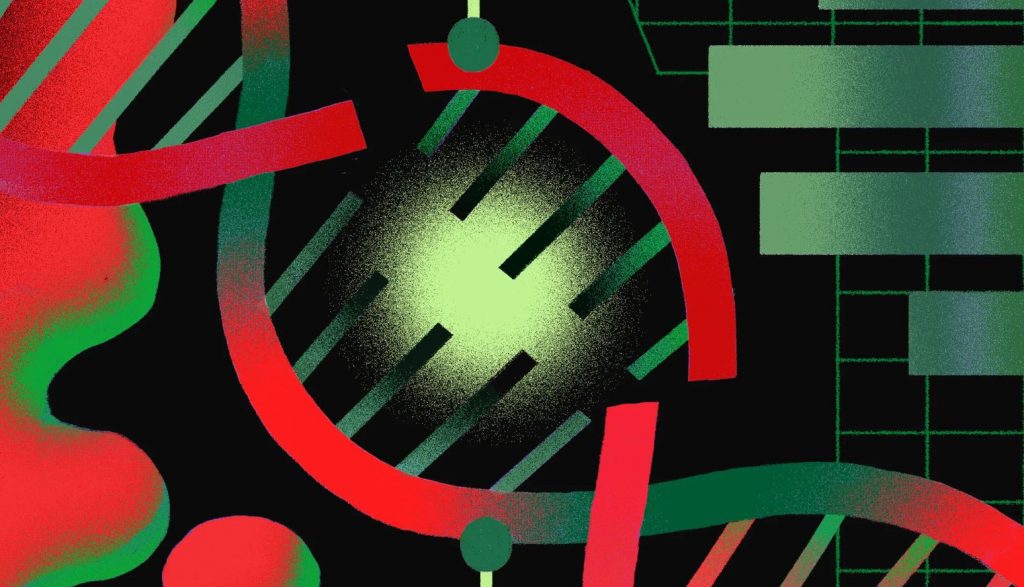
African DNA
‘Ghost’ DNA In West Africans Complicates Story Of Human Origins
About 50,000 years ago, ancient humans in what is now West Africa apparently procreated with another group of ancient humans that scientists didn’t know existed.
There aren’t any bones or ancient DNA to prove it, but researchers say the evidence is in the genes of modern West Africans. They analyzed genetic material from hundreds of people from Nigeria and Sierra Leone and found signals of what they call “ghost” DNA from an unknown ancestor.
Our own species — Homo sapiens — lived alongside other groups that split off from the same genetic family tree at different times. And there’s plenty of evidence from other parts of the world that early humans had sex with other hominins, like Neanderthals.
That’s why Neanderthal genes are present in humans today, in people of European and Asian descent. Homo sapiens also mated with another group, the Denisovans, and those genes are found in people from Oceania.
The findings on ghost DNA, published in the journal Science Advances, further complicate the picture of how Homo sapiens — or modern humans — evolved away from other human relatives. “It’s almost certainly the case that the story is incredibly complex and complicated and we have kind of these initial hints about the complexity,” says Sriram Sankararaman, a computational biologist at UCLA.
The scientists analyzed the genomes of 405 West Africans. Sankararaman says they used a statistical model to flag parts of the DNA. The technique “goes along a person’s genome and pulls out chunks of DNA which we think are likely to have come from a population that is not modern human.”
The unusual DNA found in West Africa isn’t associated with either Neanderthals or Denisovans. Sankararaman and his study co-author, Arun Durvasula, think it comes from a yet-to-be-discovered group.
“We don’t have a clear identity for this archaic group,” Sankararaman says. “That’s why we use the term ‘ghost.’ It doesn’t seem to be particularly closely related to the groups from which we have genome sequences from.”
The scientists think the interbreeding happened about 50,000 years ago, roughly the same time that Neanderthals were breeding with modern humans elsewhere in the world. It’s not clear whether there was a single interbreeding “event,” though, or whether it happened over an extended period of time.
The unknown group “appears to have split off from the ancestors of modern humans a little before when Neanderthals split off from our ancestors,” he says.
Sharon Browning, a biostatistics professor at the University of Washington who has studied the mixing of Denisovans and humans, says “the scenario that they are discovering here is one that seems realistic.”
Browning notes that the ghost DNA appears frequently in the genetic material. “That tells us that these archaic populations might have had some DNA that did some useful stuff that’s proved to be useful to the modern population,” she says.
But at the moment, Sankararaman says, it’s not possible to know what, if any, role these genetic materials have for modern humans who carry them. “Are they just randomly floating in our genomes? Do they have any kind of adaptive benefits? Do they have deleterious consequences?” he added. “Those are all questions which would be fantastic to start thinking about.”
He says there is likely evidence of other ghost populations in modern humans in other parts of the world. “I think as we get the genome sequences from different parts of the world at different points in time, there is always the possibility that we might discover these as-yet-unidentified ghost populations,” Sankararaman says.
It’s also possible that the ghost DNA found in this study comes from multiple groups, Browning added. “Within Africa, we don’t know how many archaic groups might have been involved, and the study doesn’t tell us that,” she says. “It tells us that there was integration, but it could have been from more than one archaic population, in theory.”
Compared with the Neanderthals, where there is abundant DNA fossil evidence, physical samples are much harder to come by in Africa. Browning says the climate on the continent has made it challenging.







